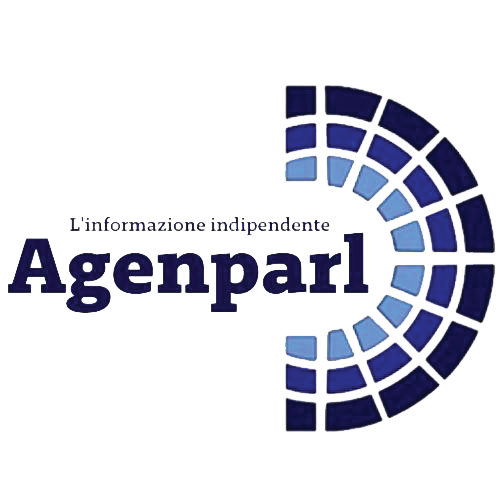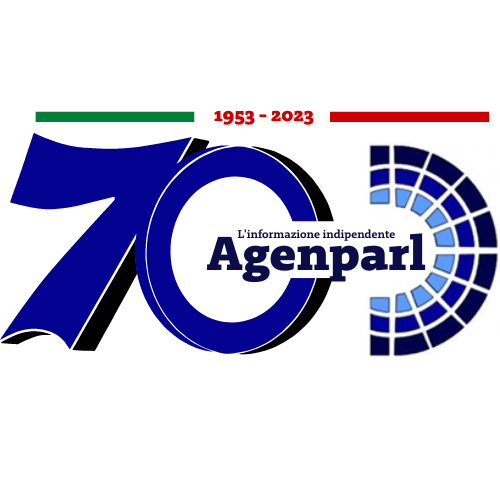 (AGENPARL) - Roma, 15 Aprile 2025
(AGENPARL) - Roma, 15 Aprile 2025(AGENPARL) – Tue 15 April 2025 Post-War Reconstruction: Tools for After
Symposium and Architectural Exhibition on Sustainable Practice Gezairi Building, Lebanese American University (LAU), Beirut — 16 April 2025 at 15:30
Beirut, 16 April 2025 – The Embassy of Italy in Lebanon and the Italian Cultural Institute in Beirut, in collaboration with the School of Architecture and Design at the Lebanese American University (LAU), are honoured to present the international symposium and architectural exhibition entitled Post-War Reconstruction: Tools for After, to be held on 16 April 2025 at the Gezairi Building, LAU Beirut Campus.
In the aftermath of the recent devastation experienced in Lebanon, the symposium offers a space for reflection and critical engagement. It convenes leading Italian and Lebanese architects, designers, and scholars to explore forward-looking approaches to reconstruction—placing emphasis on sustainable design, context-sensitive urban regeneration, and the transformative potential of alternative building materials. At the heart of the initiative lies the conviction that post-conflict recovery is not merely a matter of engineering, but fundamentally a cultural and civic endeavour.
The symposium will commence with a live keynote address by Valentina Sumini, a distinguished architect and researcher in Space Architecture affiliated with the MIT Media Lab and the Politecnico di Milano. Her pioneering work in the design of habitats for extreme environments—on Earth and in space—invites us to reimagine resilience through the lens of future-oriented architecture.
Among the featured contributors:
Virginia Corbisiero will present the People Mover, an innovative infrastructure project by Massimo Iosa Ghini, which connects Bologna’s airport to the central railway station via an electric, solar-powered monorail—combining sustainable mobility with architectural clarity.
Selenia Marinelli will examine the intersection of biology and design through her experimental work on bioplastics and community-based biofabrication, promoting new paradigms of multi-species cohabitation and material activism.
Barbara Narici and Maddalena Ferraresi, of the Geologika Collettiva, will share decades of experience in raw earth and straw construction, demonstrating their relevance as eco-conscious practices within contemporary architecture.
Cristina Setti will introduce CanyaViva, a pioneering methodology utilising marsh reeds (Arundo Donax), developed by artists Margherita Bertoli and Matteo Mannini, blending vernacular knowledge, ecological awareness, and participatory creation.
Mauricio Cardenas Laverde, Italo-Colombian architect and leading expert in sustainable bamboo architecture, will present BooTech, a low-carbon construction system with global applications across urban and rural contexts.
The accompanying exhibition—also titled Tools for After—will feature physical models, audio-visual documentation, and multimedia installations from the participating projects. Conceived as an open laboratory of ideas, the exhibition aims to render visible an architectural imagination that is both grounded and visionary, inviting the public to reflect on tangible responses to the urgent challenges of reconstruction.
This initiative forms part of a broader commitment by the Italian System in Lebanon – encompassing the Embassy, the Italian Cultural Institute, Italian Agency for Cooperation and Development (AICS), and Italian Trade |Agency (ITA) – to foster technical collaboration, academic dialogue, and cultural diplomacy in support of Lebanon’s renewal.
Through architecture, design, and the exchange of knowledge, Tools for After seeks to envision cities not only rebuilt, but reimagined—more equitable, more sustainable, and more attuned to the intricate realities of our time.
For media enquiries and press accreditation:
Italian Cultural Institute
Further information and full programme available at: https://iicbeirut.esteri.it/en/gli_eventi/calendario/post-war-re-construction-tools-for-after-simposiumReconstruire après la guerre: Tools for afterColloque international et exposition architecturale sur la responsabilité environnementale Bâtiment Gezairi, Université Libanaise Américaine (LAU), Beyrouth — 16 avril 2025 à 15h30
Beyrouth, 16 avril 2025 – L’Ambassade d’Italie au Liban et l’Institut culturel italien de Beyrouth, en collaboration avec l’École d’Architecture et de Design de la Lebanese American University (LAU), ont l’honneur de présenter le colloque international et l’exposition architecturale intitulés Reconstruire après la guerre : Tools for after, qui se tiendront le 16 avril 2025 au bâtiment Gezairi, sur le campus de la LAU à Beyrouth.
À la suite des récentes destructions ayant marqué le territoire libanais, cette rencontre intellectuelle et artistique se veut un espace de réflexion critique et d’engagement prospectif. Le colloque réunit des architectes, designers et chercheurs de premier plan, italiens et libanais, pour explorer des approches innovantes de la reconstruction, en mettant l’accent sur le design durable, la régénération urbaine sensible au contexte, et le potentiel transformateur des matériaux alternatifs.Au cœur de cette initiative réside la conviction que la reconstruction post-conflit ne relève pas uniquement de la technique, mais constitue avant tout un acte culturel et civique.
Le colloque s’ouvrira par une conférence inaugurale, retransmise en direct, de Valentina Sumini, architecte de renom et chercheuse en architecture spatiale, affiliée au MIT Media Lab et au Politecnico di Milano. Ses travaux pionniers sur l’aménagement d’habitats en milieux extrêmes — sur Terre comme dans l’espace — nous invitent à repenser la résilience à travers une architecture tournée vers l’avenir.
Parmi les intervenants de marque :
Virginia Corbisiero présentera le People Mover, infrastructure de mobilité durable conçue par Massimo Iosa Ghini, reliant l’aéroport de Bologne à sa gare centrale par une navette électrique fonctionnant à l’énergie solaire — alliant efficacité environnementale et rigueur architecturale.
Selenia Marinelli explorera l’intersection entre biologie et design à travers ses recherches sur les bioplastiques et la biofabrication communautaire, promouvant de nouveaux paradigmes de cohabitation inter-espèces et de militantisme matériel.
Barbara Narici et Maddalena Ferraresi, du collectif Geologika Collettiva, partageront plus de trente-cinq ans d’expérience dans la construction en terre crue et en paille, démontrant leur pertinence écologique au sein de l’architecture contemporaine.
Cristina Setti présentera la méthode CanyaViva, une approche novatrice utilisant les roseaux des marais (Arundo Donax), développée par Margherita Bertoli et Matteo Mannini, mêlant savoirs vernaculaires, conscience écologique et création participative.
Mauricio Cardenas Laverde, architecte italo-colombien reconnu internationalement pour son expertise dans l’architecture en bambou, introduira le système BooTech, une méthode de construction bas carbone appliquée à l’échelle mondiale, tant en milieu urbain que rural.
L’exposition associée — également intitulée Tools for after — réunira maquettes, documents audiovisuels et installations multimédias issus des projets présentés. Conçue comme un laboratoire d’idées ouvert, elle vise à rendre visible une imagination architecturale à la fois enracinée et visionnaire, invitant le public à réfléchir à des réponses concrètes face aux défis urgents de la reconstruction.
Cette initiative s’inscrit dans un engagement plus large du Système Italie au Liban — rassemblant l’Ambassade, l’Institut culturel italien, l’Agence Italienne pour la Coopération au Développement (AICS) et l’Agence Italienne pour le Commerce (ITA) — en faveur de la coopération technique, du dialogue académique et de la diplomatie culturelle au service du renouveau libanais.
Par le biais de l’architecture, du design et du partage de la connaissance, Tools for After ambitionne de concevoir non seulement des villes reconstruites, mais des villes réinventées — plus justes, plus durables, et plus sensibles aux complexités de notre époque.
Pour toute demande de presse ou d’accréditation :Institut Culturel Italien
Programme complet et informations disponibles sur :🌐 https://iicbeirut.esteri.it/fr/gli_eventi/calendario/post-war-re-construction-tools-for-after-simposiumإعادة الإعمار بعد الحرب: أدوات للمستقبل
الندوة الدولية ومعرض الفن المعماري حول الاستدامة والحفاظ على البيئة
المكان: مبنى الجزائري، حرم الجامعة اللبنانية الأميركية في بيروت (LAU)
الزمان: 16 نيسان 2025 الساعة 3:30 بعد الظهر
بيروت، في 15 نيسان 2025 – يعلن كل من السفارة الإيطالية لبنان والمعهد الثقافي الإيطالي في بيروت بالتعاون مع مدرسة الفن المعماري والتصميم في الجامعة اللبنانية الأمريكية (LAU)عن تنظيم الندوة الدولية ومعرض الفن المعماري حول الاستدامة والحفاظ على البيئة بعنوان: إعادة الإعمار بعد الحرب: أدوات ما بعد التصميم، والذي سيقام في يوم 16 نيسان 2025 الساعة 3:30 في مبنى الجزائري في حرم الجامعة اللبنانية الأميركية. LAU في بيروت.
في أعقاب الدمار الأخير الذي شهده لبنان، توفّر هذه الندوة مساحة للتأمل والنقاش النقدي المتعدد التخصصات، حيث تشارك في الحدث نخبة من المهندسين المعماريين والمصممين والباحثين اللبنانيين والإيطاليين لاستكشاف اتجاهات مستقبلية لإعادة الإعمار مع التركيز على التصميم المستدام وتجديد المدن بما يتلاءم مع السياق المحلي، وإمكانات استعمال المواد البديلة في إعادة الإعمار.
تنبثق هذه المبادرة من قناعة راسخة بأن التعافي بعد النزاعات ليس مجرد تحدٍّ هندسي، بل هو مسعى ثقافي ومدني بامتياز.
تفتتح الندوة بكلمة عبر الفيديو، ستنقل مباشرة، تلقيها المهندسة المعمارية والباحثة المتميزة فالنتينا سوميني، المتخصصة في عمارة الفضاء المنتسبة الى مختبر MIT Media Lab وإلى جامعة البوليتكنيكو في ميلانو. تدفعنا أعمالها الرائدة في مجال تنظيم المواطن في البيئات القاسية سواء على الأرض أو في الفضاء الى إعادة التفكير في مفهوم الصمود من خلال عمارة تتطلع نحو المستقبل.
من اهم المشاركين:
فيرجينيا كوربيسيرو، ستعرض مشروع “بيبول موفر”، وهو بنية تحتية مبتكرة صمّمها ماسيمو يوزا غيني، تربط مطار بولونيا بمحطة القطار المركزية عبر قطار كهربائي يعتمد على الطاقة الشمسية، مما يجمع بين الفعالية البيئية والصرامة الهندسية.
سيلينيا مارينيلي، ستستكشف التقاطع بين علم الأحياء والتصميم من خلال بحوثها حول المواد البلاستيكية الحيوية والتصنيع البلاستيكي الحيوي المحلي، مما يعزز نماذج جديدة للتعايش بين مختلف الأنواع الحية للمواد والنضال المادي.
باربارا ناريتشي ومادلينا فيراريزي مؤسِّستان لمجموعة “جيولوجيكا كوليتيفا”، ستتشاركان خبرتهما الممتدة لعقود في البناء باستخدام الطين الخام والقش، مع إبراز أهميتها البيئية في الهندسة المعمارية المعاصرة.
كريستينا ستي ستقدم منهجية “كانيافيفا”، وهي طريقة رائدة تستخدم القصب البري (أروندو دوناكس)، طوّرها الفنانين مارغريتا بيرتولي وماتيو مانيني، تمزج بين المعرفة التقليدية والوعي البيئي والإبداع التشاركي.
ماوريسيو كارديناس لافيردي، مهندس معماري من الجنسية الإيطالية الكولومبية ذو شهرة عالمية وخبير في الهندسة المعمارية المستدامة باستخدام الخيزران، سيعرض نظام “بووتك”، وهو نظام بناء منخفض الكربون يُستخدم عالميًا في السياقات الحضرية والريفية.
يرافق الندوة معرض بعنوان “أدوات ما بعد التصميم”، يضم نماذج مادية وعروض سمعية وبصرية تتضمن شرحت حول القطع الفنية المعروضة. يهدف المعرض الذي صمّم على أنه مختبر مفتوح للأفكار إلى تجسيد الخيال المعماري الذي يجمع بين الواقعية والرؤية المستقبلية، داعيًا الجمهور للتفكير في إجابات ملموسة للتحديات الملحة لإعادة الإعمار.
تندرج هذه المبادرة ضمن التزام أوسع للمنظومة الإيطالية في لبنان التي تضم السفارة والمعهد الثقافي الإيطالي، والوكالة الإيطالية للتعاون الإنمائي (AICS)، والوكالة الإيطالية للتجارة (ITA/ICE) لتعزيز التعاون الفني والحوار الأكاديمي والدبلوماسية الثقافية دعمًا لتجديد لبنان.
من خلال العمارة والتصميم وتبادل المعرفة، يطمح “معرض “أدوات ما بعد التصميم” لتخيل مدن لا يُعاد بناؤها فحسب، بل يُعاد تخيلها لتكون أكثر عدالة واستدامة وتناغمًا مع التعقيدات عصرنا.
للمزيد من المعلومات والبرنامج كامل:
https://iicbeirut.esteri.it/fr/gli_eventi/calendario/post-war-re-construction-tools-for-after-simposium

